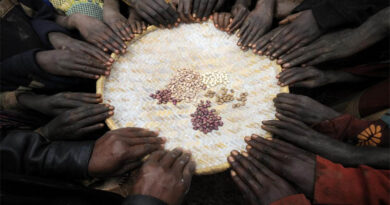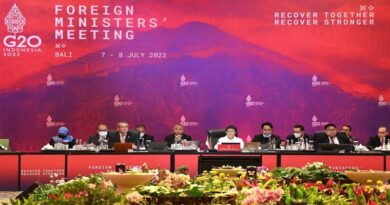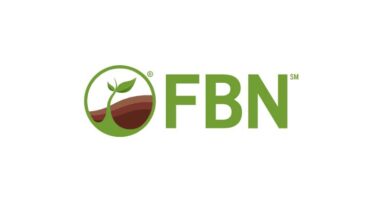Developing a New Paradigm for Partnerships: Together for Stronger Food Systems
15 July 2022, Africa: The world indeed has far to go to deliver safe and healthy food, livelihoods and environments for all, a complex undertaking made yet more difficult by climate change, the conflict in Ukraine and the COVID-19 recovery. The combined impact has left healthy diets out of reach for three billion people, according to the latest report from the UN’s Food and Agriculture Organization (FAO).
No single entity can go the distance to tackle these challenges alone. This recognition inspired, in part, the One CGIAR reform, a process that has also highlighted the fundamental need for more systemic collaboration and engagement both within CGIAR and with external partners.
Interconnected and interdependent challenges require fresh, and bold new approaches. CGIAR has already shown how research teams working across previously siloed disciplines can more effectively tackle complex issues. But transformation of food, land and water systems will require that we explore greater diversity in the range of research and scaling partners, going beyond the agriculture sector into the health and energy sectors for example.
In the past, CGIAR’s global network of more than 3,000 partners has facilitated the exchange of research, science and innovation to tackle many of the most pressing issues facing food systems in all corners of the world.
For example, collaboration between the International Rice Research Institute (IRRI) in the Philippines and AfricaRice in Côte d’Ivoire, together with National Agricultural Research and Extension Systems (NARES) partners, developed and deployed new rice varieties to withstand extreme conditions affecting an increasing number of countries from Nepal to Nigeria.
Despite vastly different social, economic and ecological contexts, countries across Southeast and South Asia and Africa are facing similar challenges of droughts, floods and salinization caused by rising sea levels. Co-developing scientific breakthroughs and climate-smart solutions through regional and cross-border partnerships is the most efficient way to address common threats.
Similarly, working with scientific institutions in more than 20 countries, CGIAR has facilitated global collaboration to develop wheat varieties resistant to stem rust, a fungus which destroyed 40 per cent of crops in the US in 1974. Pooling global expertise has provided the world’s wheat farmers with 40 new rust-resistant varieties, adding an estimated six million tons to annual harvests.
At a regional level, the Technologies for African Agricultural Transformation (TAAT) programme is an example of successful multi-sectoral, cross-disciplinary partnerships, in which a total of 15 ‘compacts’ are supported by 28 African countries, nine CGIAR Centers, the Forum for Agricultural Research in Africa (FARA), Sub-regional Agricultural Research Organizations and other institutions. More than 75 proven technologies have been deployed by national partners, including improved crop varieties and breeding programs for livestock and fish.
But the One CGIAR process has also identified where, together, we can achieve more. And this is why we have established an Advisory Panel to guide the CGIAR System Board and oversee the leadership team’s roll out of consultations across Africa, Asia, and Latin America and the Caribbean.
The Advisory Panel will review CGIAR’s Engagement Framework for Partnerships & Advocacy – Toward Greater Impact, and reflect and advise on partnerships for impact, as well as mechanisms for shared learning and engagement with governments, regional organizations, farmer groups, the private sector, and community organizations across the regions where CGIAR works.
CGIAR sees partnerships in three areas as critical to succeeding in the shared mission to transform food, land and water systems.
- The first group is in-country peer relationships for national and international innovation. NARES, which exist in all countries where CGIAR works, will be CGIAR’s primary peers and source of partnerships.
- The second is the private sector. Recognizing that the private sector is essential to food system transformation, CGIAR will build interdependent relationships with small, medium, and large enterprises, as well as with private sector coalitions, to accelerate and scale innovations.
- Finally, multilateral agencies and platforms, such as the World Bank and regional development banks, the UN’s FAO, World Food Programme (WFP), International Fund for Agricultural Development (IFAD), and other UN fora, remain critical stakeholders for CGIAR as catalysts for local, regional and global transformation.
One CGIAR is intended to maximize cooperation with accountability to achieve shared goals, all while respecting partners’ needs and circumstances. This includes integrating and strengthening CGIAR’s 11 Centers to be better equipped to co-develop demand-driven research.
The complexity of today’s challenges calls for a new paradigm for partnerships within agricultural research and innovation, and we look forward to developing it, together.
Also Read: Researchers use storytelling to evaluate women’s agency in agricultural production















